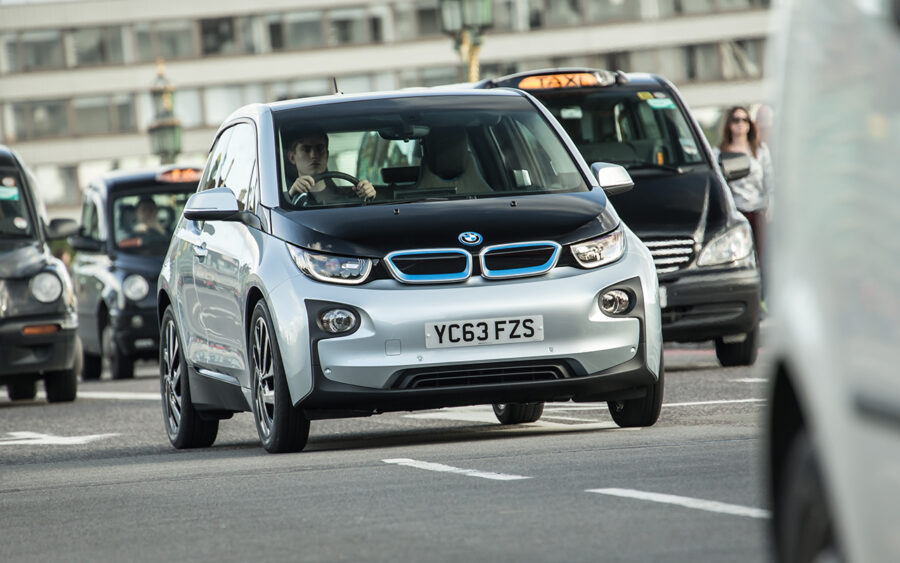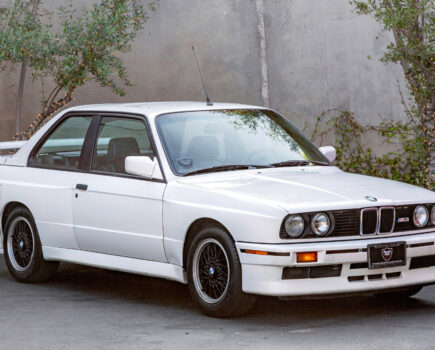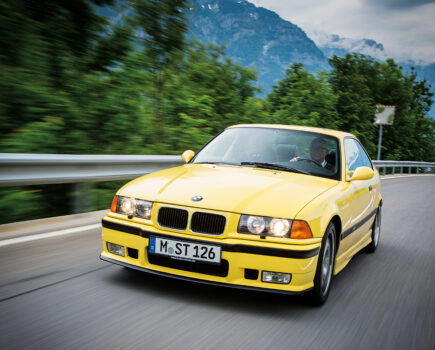The BMW i3 was a modern pioneer, offering battery power without the weight penalty thanks to its composite construction
Words: Jon Burgess Images: BMW
The 1972 Olympic Games may seem a far cry from the last i3 produced in 2022, but it tells of a storied legacy. A pair of battery powered 1602s appeared at Oberwiesenfeld in Munich, now Olympiapark, not far from BMW’s headquarters: luckily, their 60km (32 mile) range was sufficient. It took 350kg of lead acid batteries to get the 32kW motored 1602s around; and with an 0-30mph time of 8 seconds, and an absolute maximum of 62mph, there was still work to be done.
Still, the concept showed promise. The 1602 Electric had been in development since 1969 and, keen to extract more from heavy and weak battery technology, newly adapted BMW 700 LS (Luxus) prototypes took to the road. They used a Bosch-developed electric motor, and could be charged from flat in 14 hours thanks to a plug that went into the mains, a feature the 1602 Electric lacked.
As data was gathered, studies took battery development into account. Between 1987 and 1990, eight all-wheel-drive 325iXs (E30s) were converted to front-wheel-drive for various Federal government departments; showcasing new sodium sulphur battery cells from ASEA Brown Boveri, maximum range increased to 93 miles under certain conditions.
Air quality had long been an issue for legislators – but it was the Swiss that began to mitigate most heavily against the internal combustion engine; the Zermatt ski region banned petrol and diesel vehicles in the early 80s, and by 1985, the dying forest (‘Waldsterben’) phenomenon, most notable in West Germany, Austria and Switzerland, prompted renewed thinking among manufacturers.
1985 was also the year that BMW’s Technik division was formed, a think tank for new methods of construction and powertrains to engage its most creative engineers with cars on the fringes of production.
Technik’s first product was, of course, the Z1 roadster, but work on other ‘Zukunft’ (Future) prefixed cars continued into the decade. By 1990, having been made aware of the California Air Resource Board’s (CARB’s) Zero Emissions Vehicle (ZEV) mandate for 1998, work had begun on a dedicated electric vehicle. In response, General Motors created the Impact, leading in turn to the production EV1.
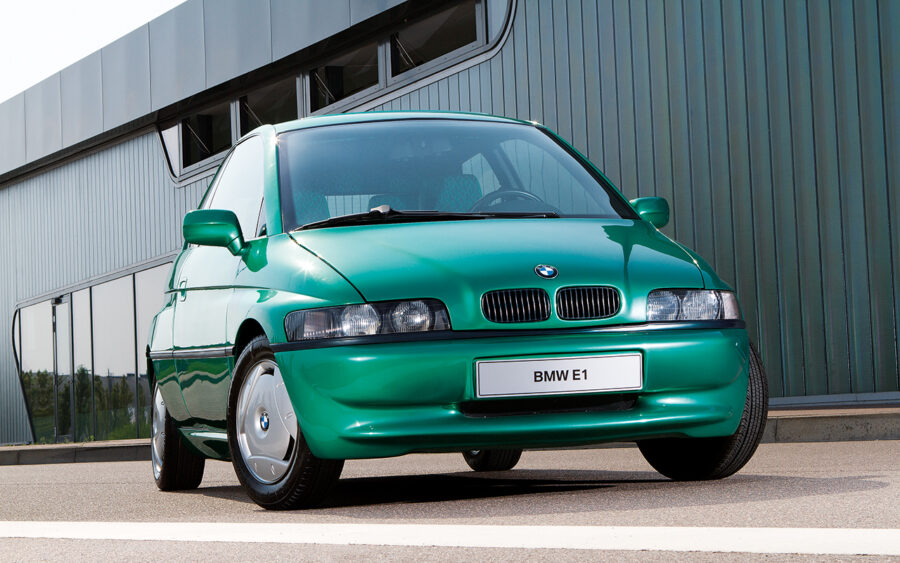
The BMW E1 concept was the firm’s first purpose-built electric car and an something of a BMW i3 for the 1990s – although it never made production
BMW’s answer came in the form of the E1 (Z11), regarded as the i3’s ancestor. Its first purpose-built electric vehicle combined extruded aluminium construction with plastic body panels in a relentless pursuit to keep weight down.
Debuted at the 1991 Frankfurt Motor Show, the E1 (Z11) was a full four seater, with a 19.2 kWh, 45bhp sodium sulphate battery pack driving the rear wheels directly from a box under the rear seat, with the transmission integrated into the rear axle.
Differing wheel sizes – 14-inch fore and 16-inch aft – were effective outer rims for the E1’s large drum brakes, simplifying construction and shaving 20kg off the unsprung weight.
That the E1 weighed circa 900kg with contemporary battery technology was something of a triumph; that a maximum quoted range of 160 km (99 miles) was also possible from a six hour wall charge was remarkable for the time. Autocar claimed a top speed of 75mph, a 0-30 time of 6 seconds, and a 0-50 time of 18 seconds.
Interest in the car was considerable: a US-specific E2, designed by BMW’s Stateside Designworks studio, was mocked up in 1992, and appeared at the following year’s IAA Frankfurt as the E1 (Z15) in both pure electric and hybrid form.
These cars predicted the i3 and i3 REx, respectively: one was a pure-electric model, with a 19.2 kWh sodium nickel chloride battery pack, the other combined said cells with a four-cylinder BMW Mottorrad engine borrowed from the contemporary K1100LT.
By then another parallel programme had started on the German island of Rügen: a 25-strong fleet of battery powered E36 3 Series coupes and saloons was evaluated long term, and the results collated.
Despite the E1’s considerable potential, concerns remained owing to the car’s range, marketing potential, the then non-existent infrastructure, crash protection and the lack of interest from other legislators outside California. Its mandate was watered down and removed altogether by 1998 killing what little chance the E1 had left of seeing production; at the same time, the Rügen 3 Series BEV tests wound down.
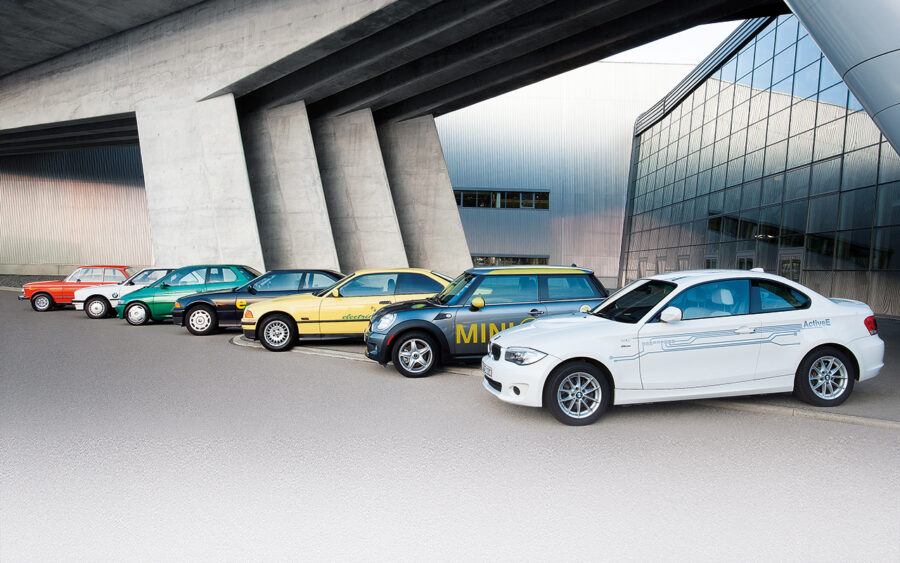
BMW has been toying with electrification since the 1970s; the BMW i3 has these progenitors to thank for its existence
Ten years later, BMW founded Project ‘i’ as consumer interest in electric vehicles grew. It co-ordinated two programmes for advanced BEV field tests: MINI E, which ran from 2009 to 2011, and BMW ActiveE, which recruited ‘Elecronauts’ on a two year lease scheme to run a fleet of all-electric, modified 1 Series coupes (2012-2014).
During this period, the seeds of the i3 were sown. Aside from 2009’s Vision Efficient Dynamics concept car, in effect, the i8 hybrid sports car prototype, a year later, BMW unveiled sketches of the Megacity Vehicle (MCV) concept, sounding all the world like a transport model from 2000AD comic book lore.
A dedicated battery electric vehicle, MCV used BMW’s LifeDrive architecture, aimed at reducing the weight of electric vehicles through its research into lightweight composites. Klaus Draeger, Member, Board of Management for Development, said: “[T]his concept allows us to practically offset the extra 250 to 350 kilograms of weight typically found in electrically powered vehicles.”
Translated, MCV (i3) was to become the first volume produced car with a carbon fibre reinforced plastic (CFRP) body. LifeDrive was split into two modules, or sections of the car: the first, Life, was a lightweight, stiff passenger cell without a ‘B’ pillar. The Life module sat atop the Drive module, an aluminium chassis containing the battery, drive system and crash structures.
Intense development selected Richard Kim’s shape for the new car, which appeared at the 2011 IAA Frankfurt show with a 22 kWh battery and a quoted New European Driving Cycle (NEDC) range of between 130 and 180 miles. It was now time for a sub-brand/marque to face the public: BMW ‘i’, the badge separate from BMW and MINI, to sell its electric and hybrid vehicles worldwide.
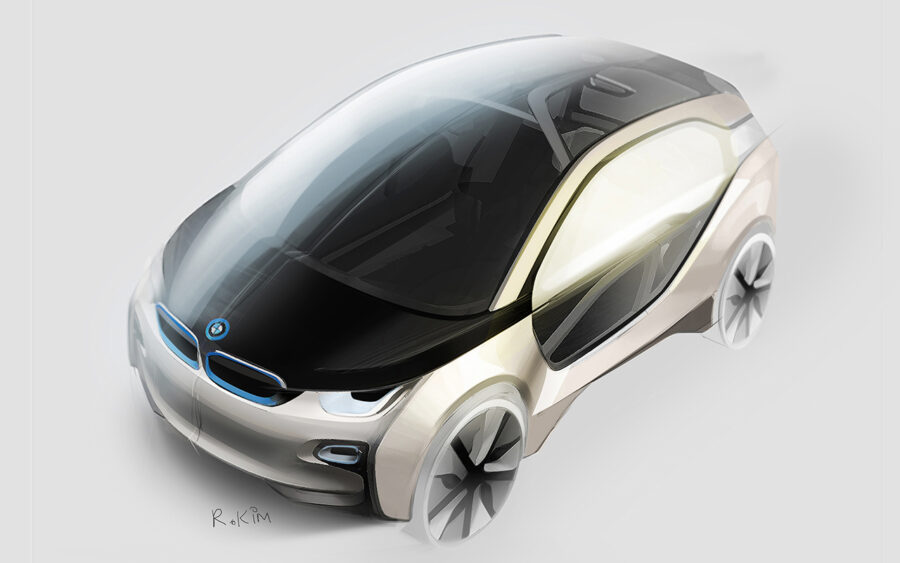
A year later, a three door i3 Concept Coupé was shown along side a five-door ‘sedan’ in Detroit, the latter’s rear hinged, shortened suicide rear ‘side’ doors being the configuration eventually picked for the production car.
Like the Rolls-Royce Phantom VII, also a BMW creation, those rear doors could only be opened when stationary after the fronts had been unlatched.
40 years after the 1602 Electric prototypes plied the site of the Summer Winter Games in Munich, a prototype i3 appeared at the 2012 Olympics in London. Closer to home, BMW’s Plant Leipzig, a relatively new factory created in 2005, was retooled for both models, at the cost of over 400 million Euros.
2013 saw production i3s released to the public, launched at that year’s IAA Frankfurt show, with 46 BMW dealers refitted or created to sell as BMW ‘i’ outlets.
Pure electric (BEV) and hybrid i3 (Range Extender/REx) models were available from the start, with one standard 60Ah (18.8kWh) lithium-ion battery pack (spread between the axles in the Drive module) offering a maximum New European Driving Cycle (NEDC) range of 118 miles; BMW quoted a typical customer range of 81-100 miles for the BEV i3.

With a quoted weight of 1195kg, the i3 hit the scales at less than most conventional steel bodied small cars; a 2013 114i five door was 1365kg. Carrying capacity was 260 litres with the seats up (over a high loading sill owing to the motor pack) and 1100 litres with the seats down.
The 60Ah battery pack offered 170bhp and 184 lb/ft peak torque, the latter available from 0 rpm as per the characteristics of the integrated rear axle motor. Autocar managed a 0-62 time of 7.2 seconds, recording a 0-37mph ‘urban dash’ in 3.7 clicks.
Charging was accomplished by a number of options: at its most basic 2.4kW/ 10 amps AC form, charging took seven hours from 0-80 per cent. AC fast charging, at 7.4kW / 32 amps, managed the same in less than three hours, while 50kW / 125 amps (Type 4) DC rapid charging, for which all i3s were prepared, could get an i3 going again from flat to that same 80 per cent state in half an hour.
It was the second mode in which BMW based its home charging set up, known as i Wallbox, with Schneider Electric, using a Type 3 cable and box that was installed by appointment. Via a public charging partner, Chargemaster PLC, i3 owners could subscribe to a charging network known as ChargeNow; by 2017, there were more than 6000 stations across the UK.
The second model, sold as the i3 Range Extender (REx), paired the same 18.8 kWh battery with a 38bhp, near flat engine adapted from BMW’s C650 scooter. This 647cc ‘twin’ was built in partnership with South Korean motorcycle manufacturer Kymco, and was completely re-engineered for its role in the i3 to fit above the motor and control pack in the rear of the car.
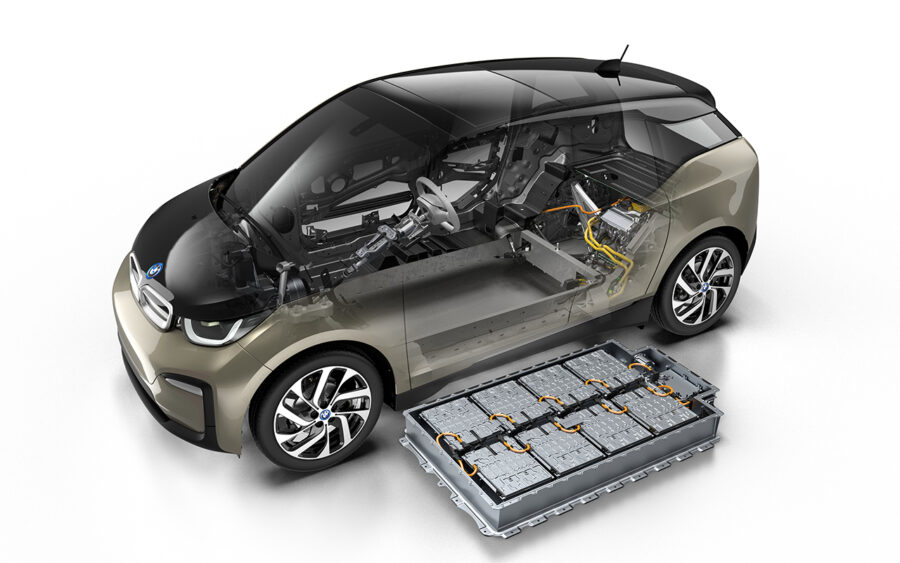
There was a 120kg weight penalty for the EU6 compliant REx engine, which was fed by a tiny nine litre fuel tank. It never drove the wheels directly (‘clutched in’): instead, it was programmed to fire up whenever battery levels dropped below a certain percentage.
0-60 and 0-37mph times dropped slightly to 7.9 and 3.9 seconds, respectively; the extra weight reducing the pure electric NEDC range to 106 miles. Customer oriented figures supplied by BMW suggested that the REx engine added between 75-93 miles to that total, however, depending on what drive mode was selected and how much regenerative braking was managed; this varied by driver.
Speaking of drive modes, there were four: Sport, Comfort, ECO Pro, and ECO Pro +, the former for the greatest performance, the middle for everyday driving, and the latter two speed limited to eke out the most range from the battery pack, aided by tall 19-inch low rolling resistance tyres; 20-inch wheels were optional with any UK trim level.
Sustainable materials appeared in the cabin to underline the i3’s ecological credentials, dependent on trim level. UK cars ran four levels, from basic Standard (later Atelier), via mid-range Loft and top specification Lodge and Suite (in the US, this comprised Mega World, Giga World and Tera World). The latter two trims featured sustainably sourced wool and leather, alongside open-pore eucalyptus wood (and full-leather trim) on the range-topping Suite.
Option packs ran to two types: Parking Assistant, which added a back-up camera, and Driving Assistant, which included adaptive cruise control and a wider screen for the navigation system.
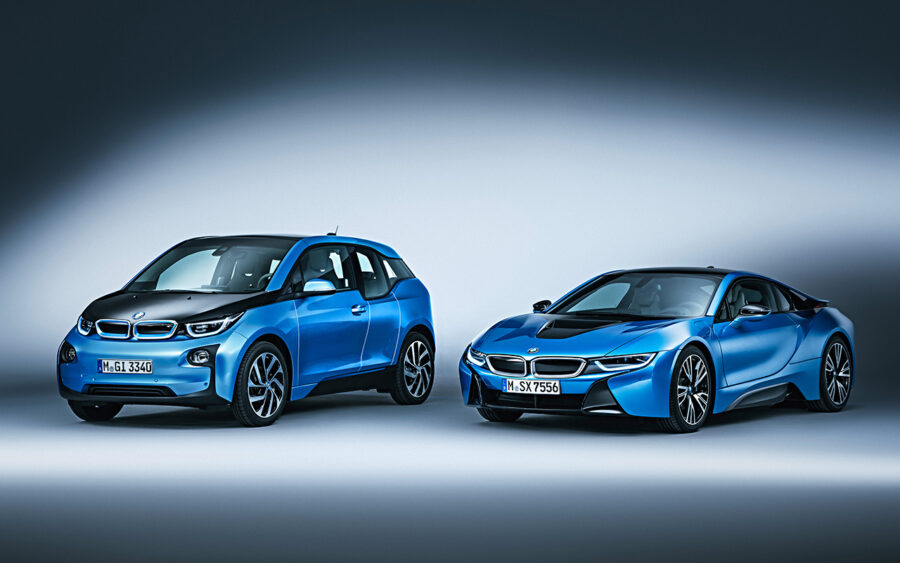
By 2016, a larger 94Ah (28.2kWh) battery pack i3 was made available to buyers, owing to better cell chemistry perfected by BMW and Samsung SDI. European customers got the larger cells first (from July 2016), with US customers waiting until the 2017 model year. Owners of the earlier 60Ah (18.8 kWh) cars in the UK, Germany and France could have their cars retrofitted with the later packs, though the 60Ah cars continued as a cheaper option, the earlier batteries repurposed for grid storage.
2017 and 2018 proved to be pivotal years for the i3: the ‘hot hatch’, 184bhp i3s joined the range as both pure EV and Range Extender/REx variants, complete with wider track and lowered suspension. A range-wide facelift altered the bumpers, standardised LED headlights, and added more colour and trim options.
As NEDC test standards gave way to the more stringent Worldwide Harmonised Light Vehicle Test Procedure (WLTP), BMW announced the discontinuation of the i3 Range Extender (REx) in Europe.
In truth, the model had proved problematic, but sales continued in the US and Japan. In the meantime, BMW had shown a 120Ah (42.2 kWh) battery pack for the i3 and i3s at the 2018 Paris Motor Show, standardised for the 2019 model year.
Though REx sales continued in the US, at the 2019 LA Auto Show, Jan Freimann, BMW’s manager for connected e-mobility, said that more energy dense lithium-ion batteries had made the range-extended i3s obsolete, telling cnet.com that the REx models “had no future”, with no further development forthcoming; it lasted until the 2021 model year in selected markets.

BMW had faced a law suit in 2016 in the US pertaining to REx models’ powertrain programming. A year later, regulations allowed American i3 REx owners to use the final 2.5 per cent capped by lawmakers, with others adding larger fuel tanks, via third-party race cells, to the tyre repair bay ‘frunk’ (front boot) to further increase the range.
Motorists unused to range-extended or plug-in hybrids also complained about the extra servicing needed on the REx models, and later (2021) models struggled with winter US fuel blends, cured by additives.
In Europe, then, the 120Ah i3s ruled the roost by 2019: even by WLTP standards, the new battery pack gave the i3 182-188 miles of range, with the faster and grippier i3s models pegged between 173 and 175 miles. Weight, dependent on specification, was a still credible 1345-1365kg. By 2020, 20-inch wheels had been standardised, while the Standard specification was renamed Atelier. Wood trim now appeared on both the higher trim Lodge and Suite cars; previously, it was a Suite-only perk.
Optional equipment ran to auxiliary heating systems for cold weather, a tilting glass sunroof, an eDrive exterior sound kit (to alert pedestrians to an approaching i3), keyless ‘comfort’ access for the front passenger doors and boot lid, blue seatbelts, and Harman/Kardon ICE.
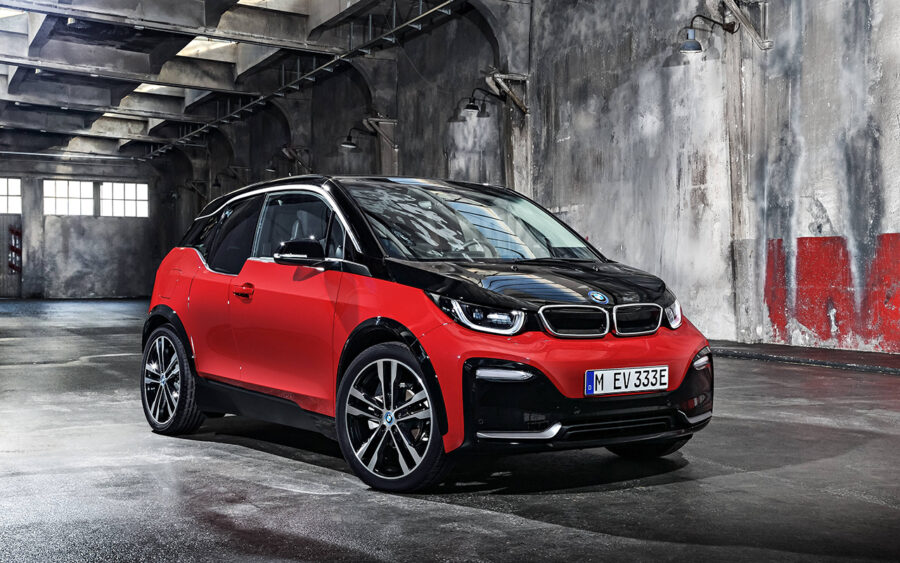
The i3s added desirable warm-hatch characteristics to the i3 in its twilight years
That larger battery pack took longer to charge, but could still manage under 5 hours for a 0-80% Type 2 charge at home (fast AC), and a new 11kW Rapid AC mode (where applicable) cut that time to under three-and-a-half hours where available. DC rapid charging took slightly longer (but quicker than 45 minutes).
With the worst of the COVID-19 pandemic over by 2021, BMW announced its intention to wind down i3 production the following year; it had no direct successor planned, but an all-electric ‘i’ range mirroring the sizes of its ICE cars were rolling out from the 2020, including the ix3 SUV that year, the i4 saloon in 2021; the i7 and ix1 SUV in 2022; and the i5 saloon and ix2 SUV in 2023.
The i3 (and i8) were mould breakers in their use of composites. Having established the ‘i’ range for BMW, their job was complete – but enthusiasts clamour for follow-ups.
BMW i3 timeline
2008
BMW Project ‘i’ division founded, a phased programme created to design, develop and field test consumer electric vehicles.
2009
600 + vehicle MINI E battery vehicle trial launched in USA, Europe, and Asia under Project ‘i’.
The trials consisted of two year leases with free maintenance schemes, similar to GM’s EV1. Battery, powertrain and range metrics collected for i3 development programme.
Vision Efficient Dynamics concept car (i8) unveiled at IAA Frankfurt, slated for a 2013 release.
2010
MegaCity vehicle (MCV) [i3 concept] confirmed, billed as first volume-produced vehicle produced with a carbon fibre-reinforced plastic (CFRP) bodyshell/aluminium chassis.
1 Series-based BMW ActiveE, a battery electric vehicle, shown at Detroit Auto Show.
2011
BMW i3 concept car exhibited at IAA Frankfurt; 22kWh battery, 130-180 mile range quoted.
BMW ‘i’ electric sub-marque (brand) unveiled, separate from BMW or MINI, to sell BMW’s battery electric vehicles (BEVs) and plug-in hybrid electric vehicles – in effect, the i3 and i8 sports car.
MINI E trials end worldwide.
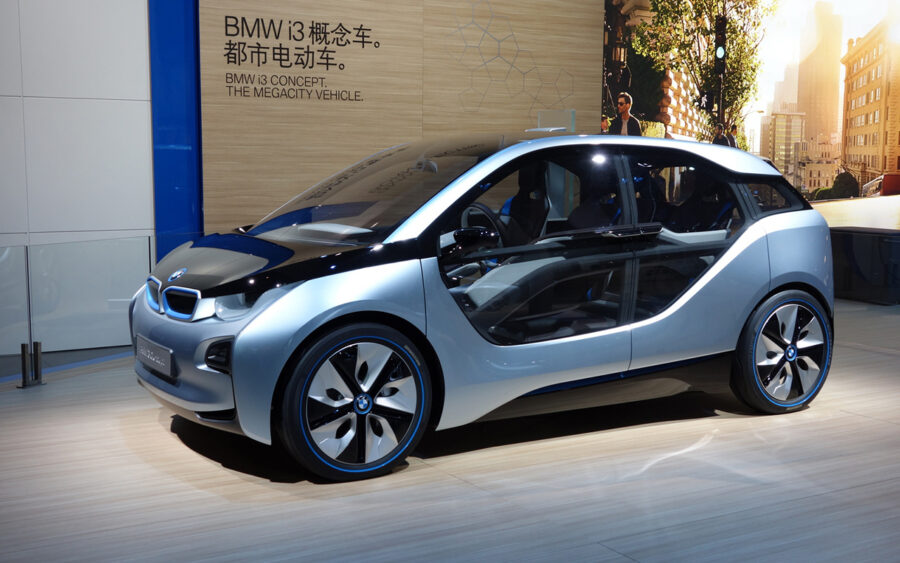
2012
i3 Concept Coupé on display at the Los Angeles Auto Show, as a three-door hatchback ‘coupé’ or a five door ‘sedan’. 99-mile all electric range quoted, boosted if paired with a Range Extender (REx) petrol engine
i3 prototype appears at the London Summer Olympics.
BMW ActiveE trials begin.
2013
i3 and i8 launched as production models at IAA Frankfurt for the 2014 model year; deliveries began November 2013 to Europe. i3 and i3 Range Extender (REx) offered at launch.
US-special i3 Electronaut special edition announced for participants in the ActiveE trials.
2014
BMW ActiveE trials end.
i3 Electronaut special edition announced for ActiveE leaseholders and Electronaut early adopter programmed. Heated front seats, special graphics and stickers, trim and décor.
2016
94Ah (28.2kWh) battery option added in July to US and European i3s, then to UK cars in August – upped range to a maximum of 186 miles NEDC range. Retrofit option (from 60Ah to 94Ah) offered to certain markets. 60Ah model continues in production, more colour and trim options added.
Limited edition i3 MR PORTER launched, to coincide with the fifth birthday of men’s fashion house MR PORTER. Special Tuxedo Blue paint and hand painted coachline, as well as fitted luggage including a MR PORTER Essentials Travel Kit (umbrella, sunglasses, hat and Leica camera). Six built, with four said to be in the UK.
US only BEV i3-based Shadow Sport limited edition produced; 50 units only, glass moon roof, all black detailing and décor.

2017
‘Hot hatch’ i3s (184bhp, 20mm lowered suspension and wider track) confirmed for 2018 model year, in pure-electric and Range Extender (REx) versions. Normal 170bhp i3 pure-electric and REx sales continue.
Facelift for ‘new’ i3 models: new bumpers, colours, trim and wheel arch extensions, iDrive 6; LED headlights and uprated navigation system now standard.
US market i3 Range Extender models get a 2.5 per cent increase in fuel tank volume; this had previously been ‘locked out’ by software and sensors to qualify for hybrid status.
‘Art Car’ i3 and i8 ‘Memphis Edition’ created between Garage Italia Customs, Lapo Elkann and architect Michele de Lucchi. Pop art inspired, alternative trim and Alcantara used for interior trim, available on request; no takers.
2018
BMW celebrates the 10,000 unit sales UK milestone for i3.
120 Ah (42.2 kWh) battery i3 and i3s shown at Paris Motor Show; replaces 60 and 94Ah models. 182-188 mile WLTP range claimed.
REx (Range Extender) discontinuation notice for Europe served owing to greater battery pack efficiency.
200-unit-in-the-UK Fluid Grey edition released, based specifically on the i3 REx. Grey/black paint and outer trim finishes, 20-inch wheels, uprated ICE, park assist pack, ‘1 of 200’ plaque.
Special 24-carat gold infused i3 Starlight Edition, with gradiated gold paint front to rear, auctioned off with a similarly sprayed i8 in the Czech Republic for the Dagmar and Václav Havel Foundation charity.
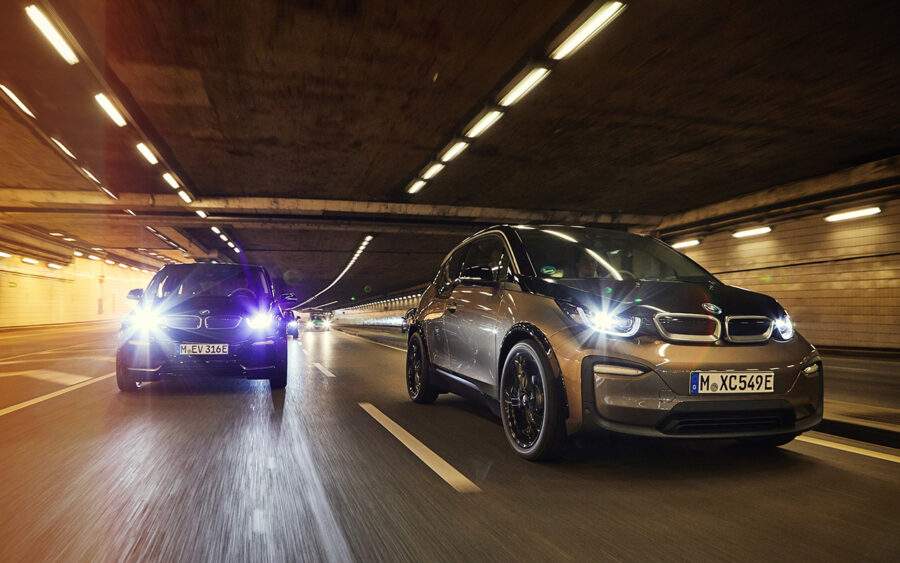
2019
REx (Range Extender) models dropped for Europe; pure-electric variants sold there only, but REx i3s continues on sale in the US and Japan.
i3s-based Edition RoadStyle confirmed for 2020: 1000 units only worldwide, Fluid Black paint, 20-inch wheels, copper contrasting body details, wood, leather and embroidered ‘RoadStyle’ headrests.
2020
i3 Edition RoadStyle released.
Two-seat ‘limo for one’ i3 Urban Suite concept debuts at CES 2020; acted as fleet cars for the show that could be called up via a special app. Single Ottoman rear with a desk lamp, drop down screen in headlining. No plans for production.
i8 ends production.

2021
BMW announces market by market discontinuation of i3, with no direct successor, starting with the US and Australia by the end of the year.
2000-unit ‘Unique Forever’ limited edition based on i3 on i3s made available in November. Colours: Storm Bay (grey)/ bronze stripes or Aventurine Red/grey metallic stripes. Special leather interior, ‘One of 2000’ plaque and embroidered ‘Unique Forever’ head rests.
BMW drops i3 prices in the UK to keep within the scope of the Government Plug In Car Grant (PiCG).
2022
i3 production for all markets (250,000 units quoted) ends in July; 20 Home Run edition cars produced to mark the end of production, based on i3s in two BMW Individual colours – Dark Gray or Frozen Red II. 20-inch wheels, electric glass sunroof, adaptive headlights.
Leipzig plant retooled for Mini Clubman.

